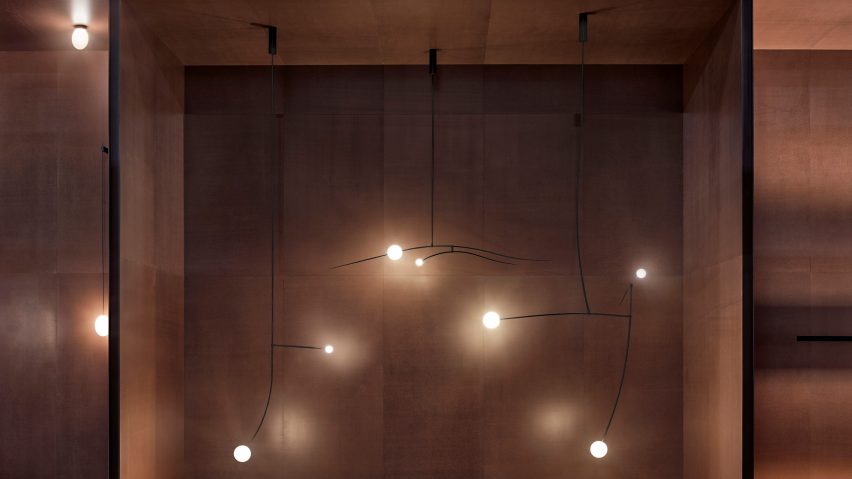
"We need to create things that last" says Michael Anastassiades
It's easy to shock with technology and innovation, says Michael Anastassiades, but the real challenge for designers is creating objects that stay relevant over time.
Anastassiades – who is Designer of the Year at the Maison&Objet furniture fair in Paris this week – has built his business around producing lighting designs he believes will become timeless.
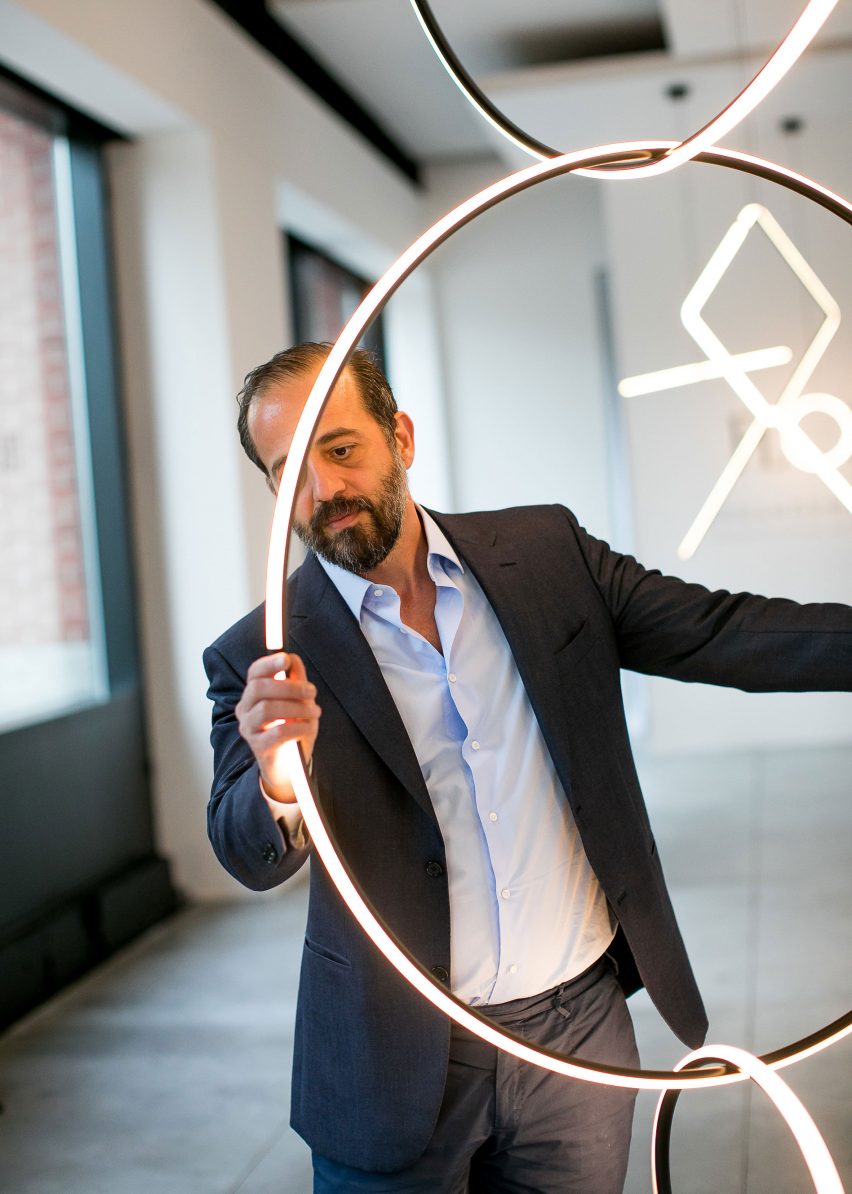
Speaking to Dezeen at his studio in north London, he explained that, despite being a designer, he is against consumerism. He believes new objects should only be made if they are going to last a long time.
"What is the need for constant change, as if we don't have enough?" he said.
"Nothing in this world is new"
"Being a designer and being against consumerism in that way, it's a bit of a paradox," he continued. "Our culture tries to encourage this change, this ephemerality, this newness, whatever."
"But it's all fake, it's all artificial."
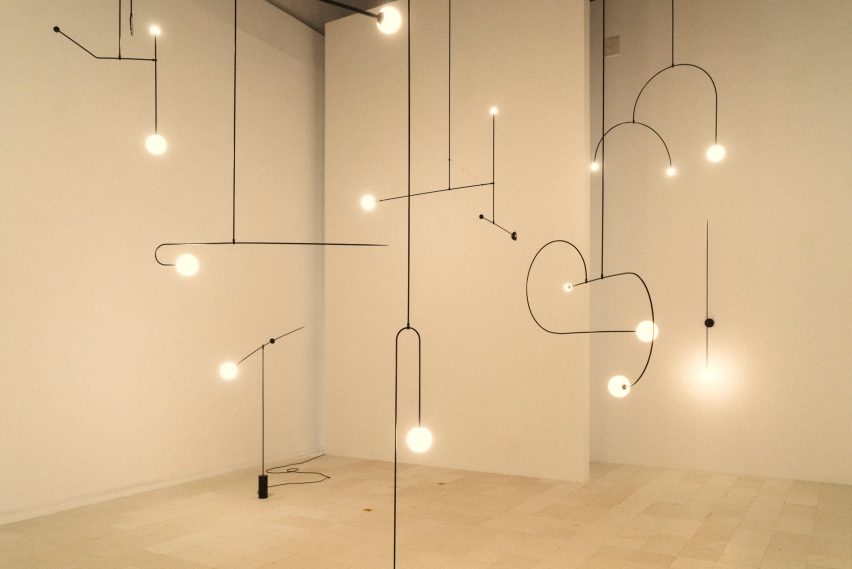
Anastassiades believes that no new design can be truly unique, that all ideas are recycled from somewhere.
"Nothing in this world is new, not even ideas; everything has been done before historically," he told Dezeen.
"We have evolved as human beings, but the notion of creativity hasn't really evolved over thousands of years. It's a moment to really accept what your contribution to the world of design can be."
"I didn't fit in a mould"
Anastassiades, aged 53, is today one of the world's most highly respected lighting designers, thanks to products like his Mobile Chandelier series. But his route into the industry was a long and unconventional one.
Born in Cyprus, he always aspired to be an artist but, to satisfy his parents, he chose to study civil engineering at Imperial College London.
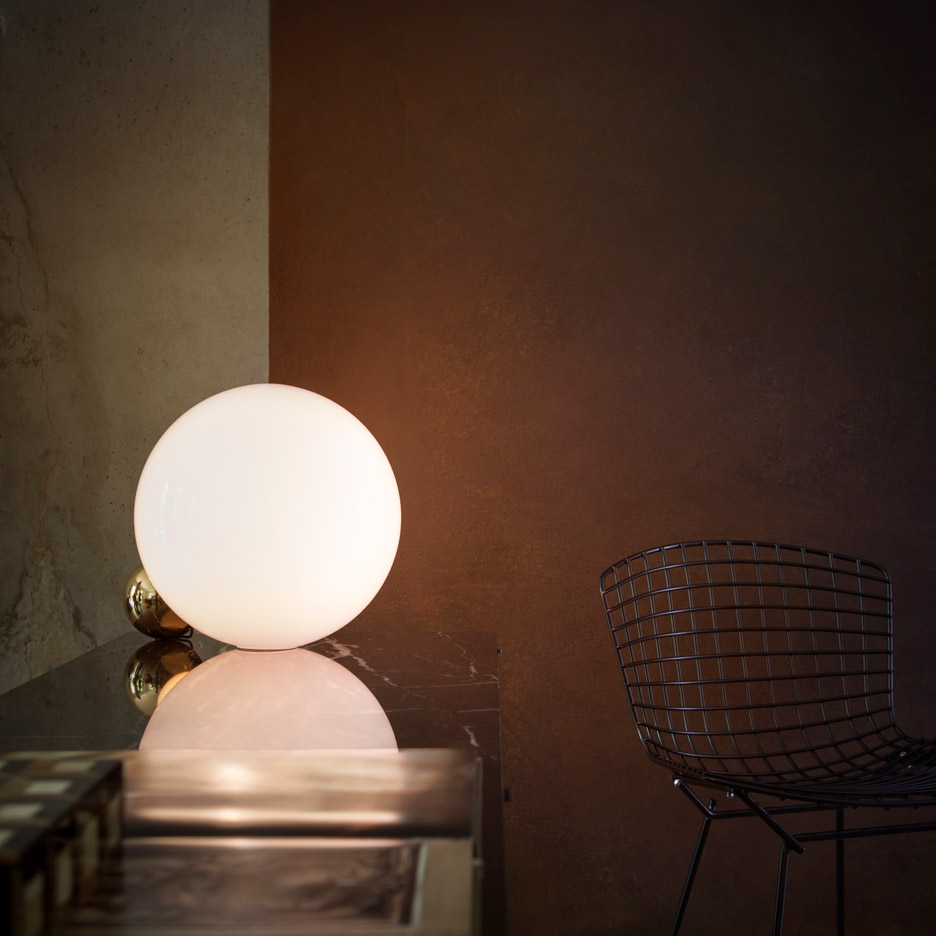
After realising that he wasn't suited to engineering, he took up a masters in industrial design and engineering at the Royal College of Art, but even after that he struggled to find a career path that suited him.
"I didn't fit in a mould of anybody; there were no designers that I could relate to," he explained.
"Flos gave me the freedom I needed"
After over a decade of soul-searching, which saw him produce experimental designs while also working as a design tutor and a yoga teacher, Anastassiades finally decided to set up his own lighting design business.
A breakthrough came in 2011. Presenting his designs for the first time at the Salone del Mobile in Milan, he caught the attention of Piero Gandini, then-CEO of prolific Italian lighting brand Flos.
This was the start of a collaboration that has endured for nearly a decade, and produced many iconic designs, including the String Lights, Copycat and the popular IC Lights.
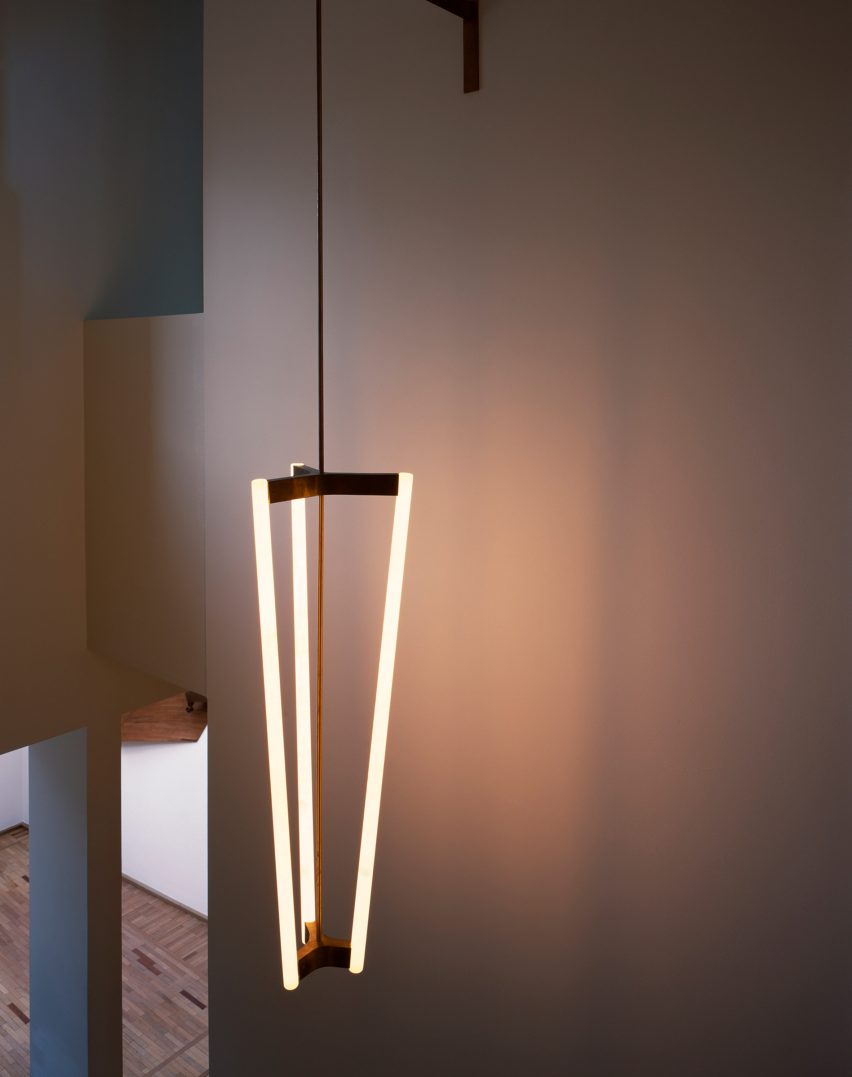
Anastassiades explained that Flos gave him an opportunity to test ideas at a scale he would never have been able to with his business.
"Many people ask me what I give to Flos and what I keep for myself," said Anastassiades. "In a way, I gave Flos a little bit of my image and Flos gave me the freedom that I needed."
"I don't feel the need to say yes"
The designer believes the success of his career and his collaborations, including recent partnerships with companies like Herman Miller and Bang & Olufsen, come down to his maturity.
"I think that arriving at this stage of your career at a mature stage in your life is much more rewarding," he added. "You know when to say no, when to take something on or not take something on."
"I don't feel the need to say yes," he added. "Had it happened to me 20 years ago, I wouldn't be the same."
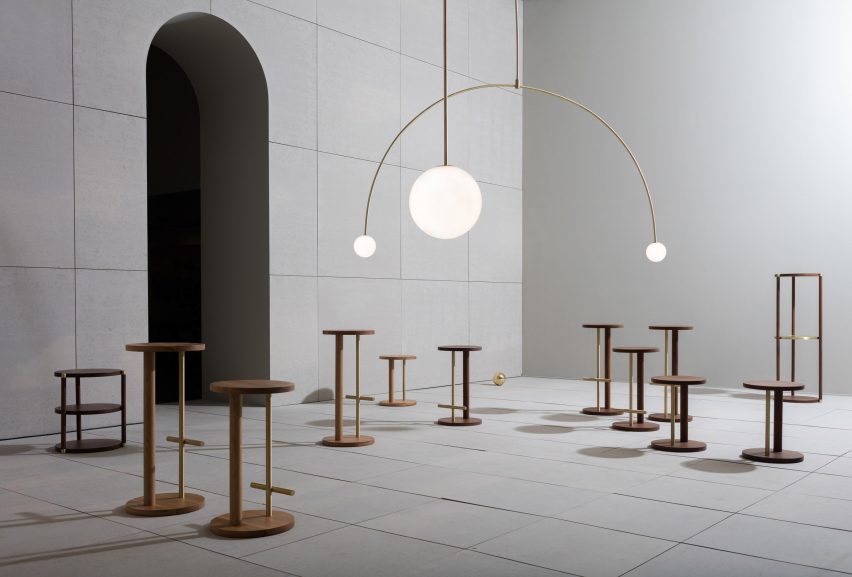
Anastassiades is presenting an exhibition of his Mobile Chandeliers at the entrance to Hall 7 at Maison&Objet, which opens today and continues until Tuesday 21 January.
Read on for the full transcript of the interview:
Amy Frearson: How did you start your career in design?
Michael Anastassiades: It was never straightforward. Design was not a clear direction from the beginning. As a child growing up, I always wanted to do something creative. I wanted to be an artist, but that was also all I knew existed at that time. I grew up in a very small place, Cyprus, where I didn't have exposure to all the creative disciplines that you could study. You could either become an artist or you had to do something else entirely. And unfortunately it was not an option for me to become an artist because my parents wanted me to get a job. They always associated the idea of being or doing anything creative as a kind of failure.
Amy Frearson: What did your parents do for a living?
Michael Anastassiades: My mother didn't really work, she was mainly at home looking after us. My dad was a self-made businessman, of course retired now, but he never went abroad to study. That's why he wanted both me and my brother to pursue further education and have that structure in our lives that he didn't have. Somehow the idea of doing something creative was not structured enough.
Amy Frearson: What did you do instead?
Michael Anastassiades: I decided that engineering would be a good thing for me to study. I was very good at maths and physics, so I thought I could get into a good engineering school. So I came here, to London, and I went to Imperial College to study civil engineering.
Engineering seemed like a good compromise, because I thought it would allow me a little bit of creativity. Although I have to say that there was not much of that. That was the reality. I figured out pretty quickly that I didn't want to be a civil engineer, then halfway through my degree I discovered the Royal College of Art. I figured out that, because it's a masters college, it could enable someone with an engineering degree to do a masters in design. And the Royal College is a very reputable institution, so my parents could not say no, now I had the degree they wanted me to get.
That changed everything, in terms of exposing me to a creative environment with other creative people. The course itself was not ideal, it was industrial design and engineering. I felt I wanted to run away from engineering, but I had to be constantly reminded of it. There are designers that are more towards the James Dyson end but I felt that I was completely at the opposite end. That part of design was not really my preference.
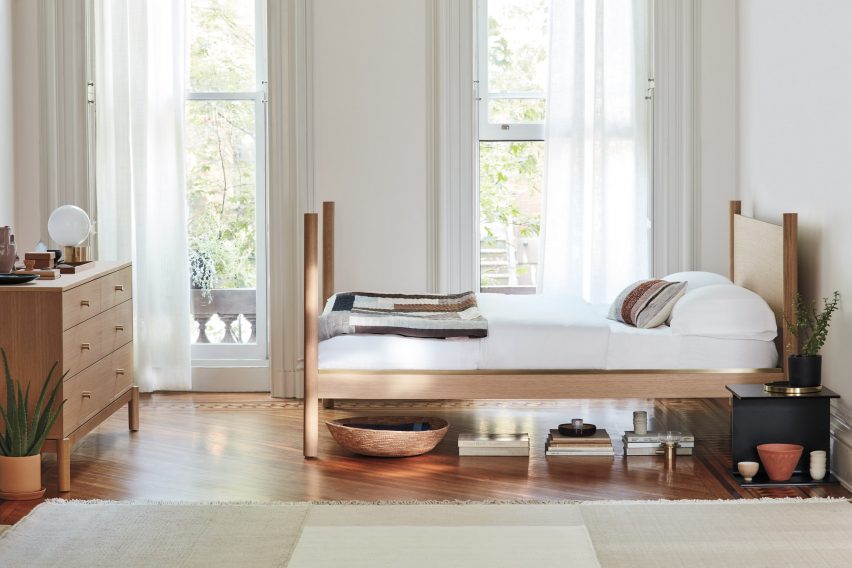
So after the Royal College, I spent many years trying to really figure out what I wanted to do, or at least what I wanted design to be. Two years of design education hadn't given me any defined direction. I didn't fit in a mould of anybody; there were no designers that I could relate to.
For many years I ended up using design as research. I did a lot of experimental design, some quite interesting projects that were shown in various institutions around the world, like MoMA. They were interactive pieces designed to raise questions, rather than to become real products.
Amy Frearson: Can you give some examples?
Michael Anastassiades: My graduation project was the Message Cup, a cup for people that share the same household to record messages. Another was the Anti Social Light, a light that glows only when there's absolute silence. These projects were really questioning the role of electronic products, particularly within the domestic environment. I was very much intrigued with the psychological dependency that existed between objects and users.
Amy Frearson: How did you move from these experimental projects to lighting?
Michael Anastassiades: Design as research remained from the early 1990s up until the early 2000s, and I did a bit of teaching to support myself. Design was not a job for me at that time, it was very much research. At the same time, I figured out that I had a big passion for objects. I had a passion for everyday things and I had an opinion on what was going on in the world of design at that time, although I had never really tried myself in that area.
It was an interesting period because it coincided with me buying my first house. I decided to settle in the UK, and bought a small terraced property in south London and started doing it up. I figured out what objects I needed, particularly lighting, but I couldn't find what I wanted. I couldn't afford the pieces that could possibly fit my brief and so I thought I might as well make the pieces myself.
I had also met and become very close friends with Bijoy Jain from Studio Mumbai. He was shortly based here in the early '90s and we worked on a project together, an interior. After that he asked me to help him in a lot of his projects, not only in terms of interiors and furnishings, but also in terms of the bigger concept.
I think the conscious point when I said 'okay this is what I'd like to do' was in 2007. After the encouragement and response I got from all these objects, the next step was to create my own brand.
Amy Frearson: So you launched your own brand before even creating products for other brands?
Michael Anastassiades: Yes, 100 per cent. For most designers, their work is developed before. The first pieces I made were not pieces that could convince any brand to invest in me. They were great ideas, but I don't think they would be ideas that could attract a manufacturer.
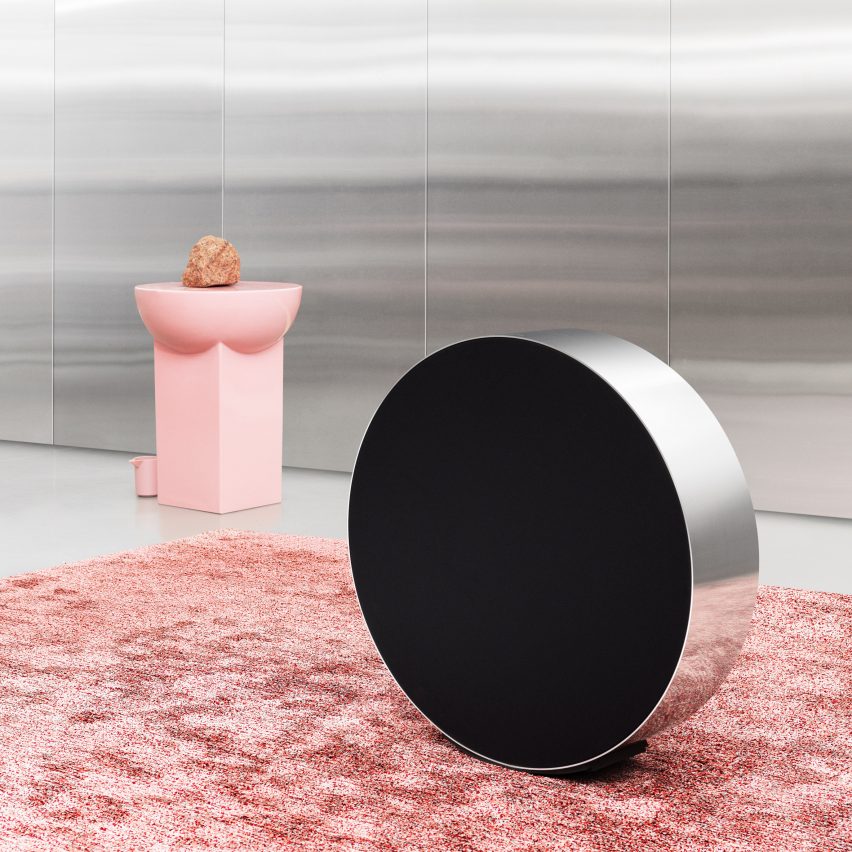
Amy Frearson: How did you get your business off the ground? What were the first designs you produced?
Michael Anastassiades: I decided to focus on lighting because it was much more manageable for me, rather than opening up to the whole spectrum of furniture. I was encouraged in lighting because a lot of architects and friends were telling me they liked my ideas in lighting. So I thought, it had to be a lighting brand.
The first few years of the brand were a lot of hard work but the main breakthrough came in 2011 when I decided to I present my brand at the Salone del Mobile in Euroluce. It was quite amazing that they gave me a stand in such a competitive setting. That changed things because it was where I met Flos, where I met [former Flos CEO] Piero Gandini, and we embarked on this long journey together.
Amy Frearson: What was is like working with Flos and what impact did it have on your own business?
Michael Anastassiades: It was an interesting match, an interesting moment. I was suddenly given this platform to approach design with a completely different level of freedom, in a sense. I wasn't 20 any more, I was already mature and I had some experience in lighting, so things were very different. I already knew what worked and what didn't work, so everything started in a very focused way, and it was enabling me to do all the things that I couldn't actually do with my own brand, because of the scale of it. Suddenly working on a much larger scale, I could use complex processes, interesting technology and more extreme ideas.
Amy Frearson: So with Flos you were able to test the kinds of ideas you weren't able to with your own brand?
Michael Anastassiades: Yes. So that allowed both companies to exist and support each other. Many people ask me what I give to Flos and what I keep for myself, and how these companies can work together. In a way, I gave Flos a little bit of my image and Flos gave me the freedom that I needed.
Amy Frearson: Will your relationship with Flos continue now that Piero Gandini has left the company?
Michael Anastassiades: It's different but it certainly will continue, there's no doubt about it. It's different people, different management, but the same history. I'm very hopeful that we'll find a way to figure it out.
Flos has been an amazing platform for a lot of people, but especially for me. If you look at the experience that other designers have had within Flos, the span often goes over 15 or 20 years. In my case, it's all been so accelerated. That acceleration is also now happening for me in the furniture world. I had to catch up for all those years, but I don't feel I'm rushed into anything. It feels right.
I really feel lucky that I've been given all these opportunities to try my ideas in different fields with amazing companies. I couldn't think of myself in a better place. If I was to repeat my career, I wouldn't do it in any other way. I think that arriving at this stage of your career at a mature stage in your life is much more rewarding. You know when to say no, when to take something on or not take something on. I think that is absolutely fundamental. I don't feel the need to say yes, if I don't think something is right I will often say. Had it happened to me 20 years ago, I wouldn't be the same.
Amy Frearson: Would you advise other young designers to do the same as you, to take time finding the right path?
Michael Anastassiades: Not necessarily no. It felt right for me at that time, the type of character that I am, but some people need a more clearly defined career path. I took a very long way. It's been a long journey, but a great journey. I've tried different things and that's good because it's given me a different perspective about what I think design should be. I created this distance so that I could step away and see design in a much more clear way.
For many years, when I was struggling financially, I used to teach yoga to support myself, because I wanted to distance myself from the need to use my profession to make money and survive. I wanted to be true to my ideas so I'd rather keep my ideas independent of the idea of survival. Yes I taught a little bit and earned some money from that, but I never wanted to be a teacher in design. I preferred to be a teacher in yoga – it paid the bills so I could keep my design research going.
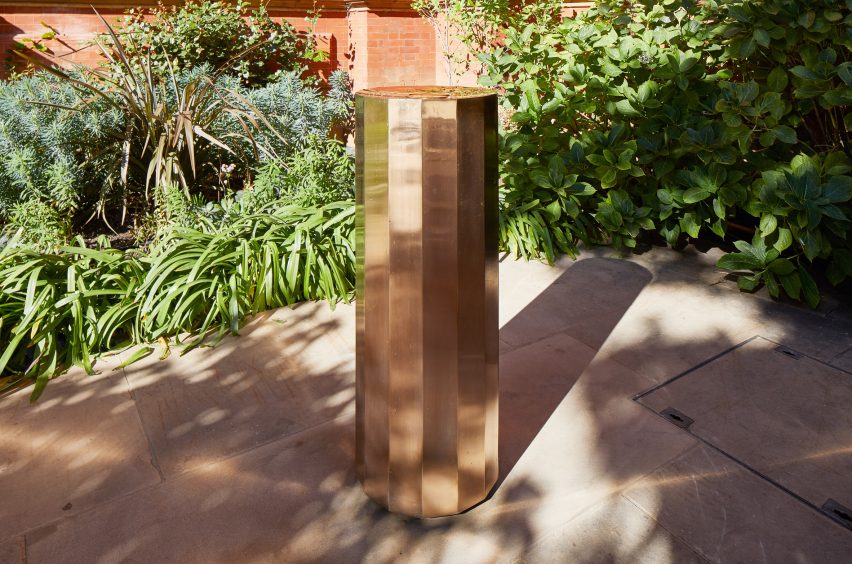
It's funny that today very few people remember the other type of design that I used to do. It doesn't bother me of course, because it's a different audience. Identity, at the end of the day, doesn't have to be one or the other. It is what it is and that's great for me. What I've realised through my career is that I've always felt the urge to be boxed in and I never wanted to be in any of these boxes.
Amy Frearson: What other challenges did you face in the early days of your brand?
Michael Anastassiades: I had to learn to be an entrepreneur, which was not a skill that I had, or at least I felt that I didn't have it. I never had a finance person behind me and I never had money behind me either. I took my first loan out of the bank to subsidise the production of my first lights. It was a scary moment, but that was the only way I could do it. I had to try it.
You learn through all your mistakes and hopefully you don't make that many. The problem for a lot of people is that they start something and they feel that they hit the wall. That's human nature. We're presented with obstacles that we need to overtake and if we are not able to build up a resistance then it is easy to give up. If you do not know exactly what you're looking for, it's very difficult. You can stop many times and you can give up many times. I surprised myself sometimes when I kept going, because I really figured out what I wanted to do through a process of elimination, by actually doing the things that I didn't want to do. The sense and the logic of the sequence has only really come in the last 10 years.
Amy Frearson: What is the ethos behind the designs that you produce?
Michael Anastassiades: Nothing in this world is new, not even ideas; everything has been done before historically. The problem is lack of education and information; people are not really aware how many ideas have been recycled over so many years. Creativity dates back to human creation and it's amazing that the evolution of creativity has not been that great. We have evolved as human beings, but the notion of creativity hasn't really evolved over thousands of years. It's a moment to really accept what your contribution to the world of design can be. I relate to this kind of aesthetic – that things are there and they can still be relevant over an extended history – so I try to find the qualities that make timeless design.
I started going to the Salone del Mobile pretty much as soon as I graduated, trying to really understand the world of design. What I was doing at the time was nothing to do with that, but I was still fascinated with it and very attracted to it. It was interesting to see how all these big historic brands had this fascinating way of revamping themselves through the old classics. I wondered, what is it that makes these pieces timeless? Why do people buy the same things over and over again? Can you possibly create something new with those values in mind? I think we can.
Amy Frearson: How do you go about making an object timeless?
Michael Anastassiades: I'm not saying that everything I produce will be timeless but at least I'm conscious of it. I'm not thinking that I'm going to change the world. What is important to understand and acknowledge it that it's a much bigger challenge, to work on that level of subtlety and make a difference, rather than trying to shock with technology, new materials, innovation. I'm not saying that those things are not great, of course they are important. But it's easy to shock somebody with something new, because you attract attention. The question is, are they able to sustain that? Probably not, because if the innovation becomes an everyday thing. In less than a year that shock is not there anymore. After that, there's nothing that pulls you in.
As a designer, I believe that we need to create things that last for a long period of time. This for me is fundamental, I don't think an object should be ephemeral. I don't deal with technological products, I'm not in that kind of world, at least not yet. In lighting there is a little bit of technology, but I still don't see why things shouldn't be relevant after long periods of time. What is the need for constant change, as if we don't have enough? I think we have enough things.
Being a designer and being against consumerism in that way, it's a bit of a paradox. Our culture tries to encourage this change, this ephemerality, this newness, whatever. But it's all fake, it's all artificial.
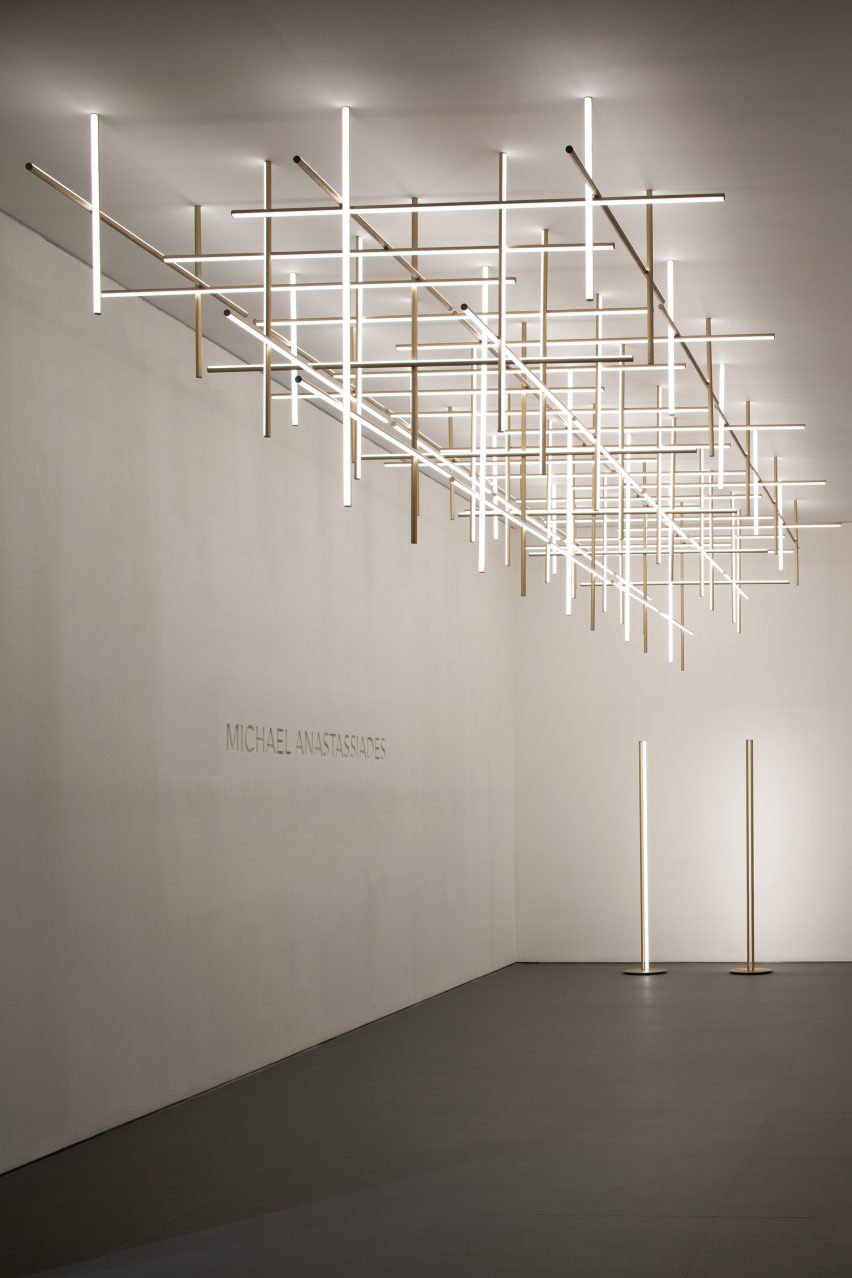
Amy Frearson: How do you rationalise the paradox of being a designer and being against consumerism?
Michael Anastassiades: At the end of the day, I think this is why people come to me and what attracts companies. This is my approach to design.
I don't use design as a profession, I use design to express my ideas. I think that's important. You could argue that I have a successful business, I have a successful studio, so I'm not really saying anything different. But it is different. Many times I've figured out that, if I really wanted to succeed in a certain type of design, I would be doing completely different things. For me, the idea of launching my brand was to keep full control over my ideas.
Amy Frearson: How do you develop ideas in your studio?
Michael Anastassiades: It varies. Sometimes a very abstract concept leads me to a more defined idea. I'll have a vague picture of something that actually doesn't exist, but deals with certain concepts. It's only through the process of thinking over and over again that the idea starts getting a little bit more defined and then eventually becomes something, so that when you see the end product you think it couldn't have been anything else. It's so straightforward, but it's not so simple.
Other times it's an image and you know that, by replicating that image, you can arrive at something in a different sort of process.
I enjoy the bigger concepts much more and I'm able to do that in some designs. A few of my projects for Flos are like that. String Lights, for example, were quite a new way of lighting and that started as an abstract thought.
Amy Frearson: So you never really work to briefs?
Michael Anastassiades: No never. Usually with brands it gets defined in terms of the type of object, but from then on it's up to me to come up with an idea that satisfies that. I think it works in that way.
I've never worked on a single brief for Flos. I've always presented concepts that I have worked on for long period of times and they have never been turned down. That's the biggest satisfaction. I believe in this level of communication that exists between manufacturer and designer. I think great things happen when that relationship is mastered.
Amy Frearson: A more recent defining moment of your career was your retrospective exhibition at NiMAC in Cyprus. What made you decide to hold an exhibition in your home country rather than somewhere more mainstream?
Michael Anastassiades: I had various informal proposals for a big show from different institutions and in different parts of the world, but it felt right for me to do it in Cyprus. That's where I grew up. I'd never had a show of that scale before, so it made sense for it to be there. It didn't really matter whether commercially it made any sense, because it didn't, such a small place and small audience, but hopefully with the book it did travel.
Amy Frearson: What did you show in the exhibition?
Michael Anastassiades: We showed one complete body of work, which was the Mobile Chandeliers. We showed 13 mobiles in that show. You can argue that these are mobiles because they move, but they are not really mobiles; they're not structures in perfect equilibrium. But balance has always been an important concept in my work.
Amy Frearson: What else have you got coming up this year?
Michael Anastassiades: I have lot of new projects and new collaborations for Salone. We're extending some collaborations that we started with some brands last year, there are some new things with companies that we work with, and there are new things and new companies that have been added to the list. Last year we were given so many opportunities; it was amazing to be able to realise projects beyond the world of furniture and lighting, like the Bang & Olufsen speaker and the water fountain project. It makes me very happy to receive these invitations from completely different parts of the design world.
Amy Frearson: Is it a challenge to ensure that your brand doesn't become secondary to these new opportunities?
Michael Anastassiades: Absolutely, but my brand still remains the ultimate platform for me to express my ideas and my real passion for lighting. I need to keep that alive.